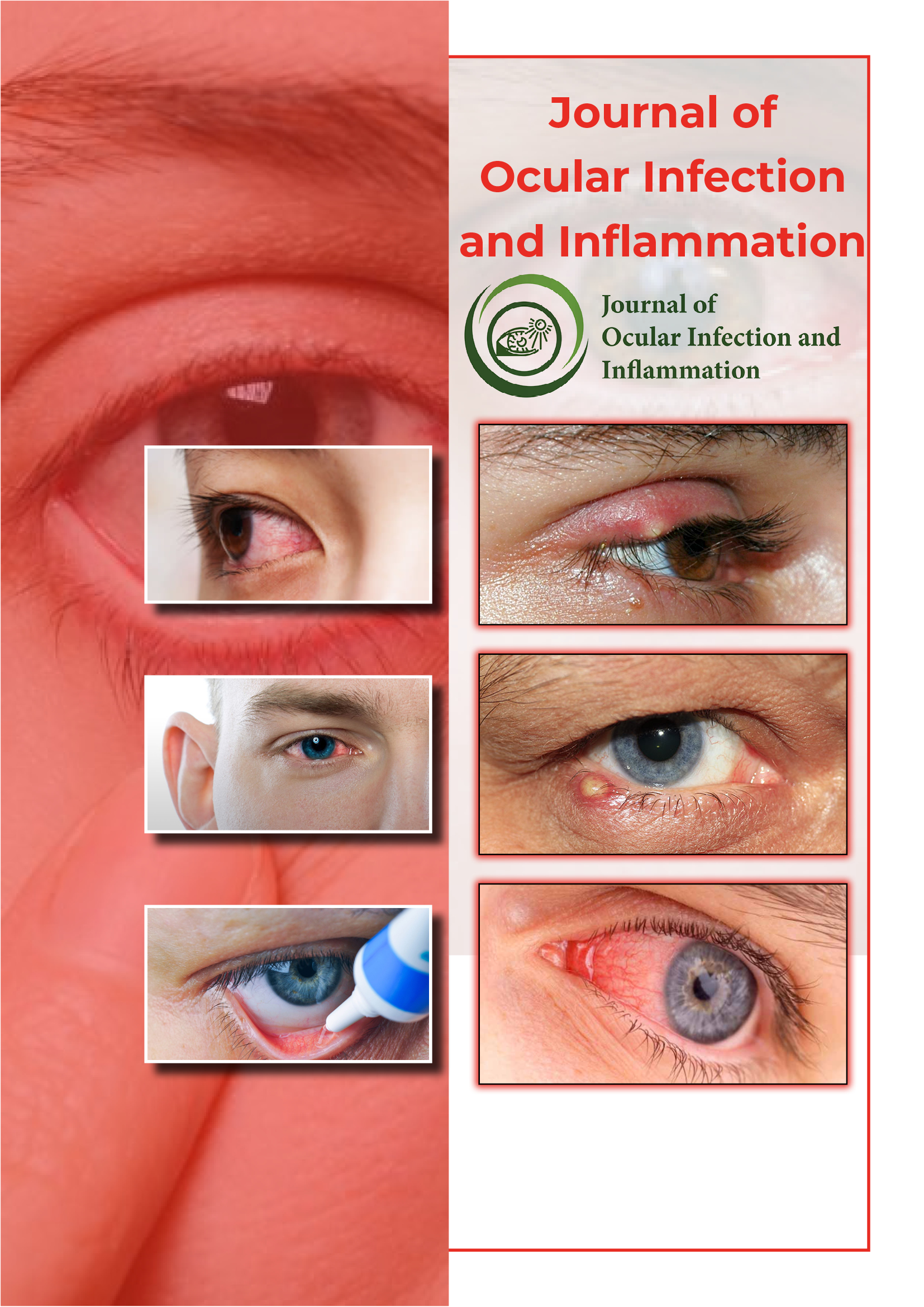Useful Links
Share This Page
Journal Flyer

Open Access Journals
- Agri and Aquaculture
- Biochemistry
- Bioinformatics & Systems Biology
- Business & Management
- Chemistry
- Clinical Sciences
- Engineering
- Food & Nutrition
- General Science
- Genetics & Molecular Biology
- Immunology & Microbiology
- Medical Sciences
- Neuroscience & Psychology
- Nursing & Health Care
- Pharmaceutical Sciences
Perspective - (2022) Volume 3, Issue 1
Early Diagnosis and Management of Ocular Migraine
Briggs Takario*Received: 05-Jan-2022, Manuscript No. JOII-22-15795; Editor assigned: 07-Jan-2022, Pre QC No. JOII-22-15795; Reviewed: 20-Jan-2022, QC No. JOII-22-15795; Revised: 24-Jan-2022, Manuscript No. JOII-22-15795; Published: 01-Feb-2022, DOI: 10.35248/JOII.22.3.103
Description
Migraine of the eye is a fairly common cause of transient monocular blindness in young adults. This disorder is manifested by recurrent seizures of unilateral visual impairment or blindness that last for minutes to an hour with minimal or no headache. This phenomenon is alarming for patients who usually seek medical assistance to rule out amaurosis fugax due to retinal artery ischemia.
Migraine is a complicated disease characterised with recurrent episodes of headache, most usually unilateral and in a few instances related to visible or sensory symptoms together called an aura that get up earlier than the top ache however that can arise in the course of or afterward. Migraine is not unusualplace in ladies and has a sturdy genetic component.
Retinal migraine headaches are thought to result from transient vasospasms of the choroid or retinal arteries. The absence of a history of recurrent seizures of transient monocular vision impairment or blindness with or without headache and other neurological symptoms suggests retinal migraine. A personal or family history of migraine confirms the diagnosis.
It is important to rule out the cause of eye disease or blood vessels, especially if there are risk factors for atherosclerosis. In short, this condition should be distinguished from the cause of transient monocular blindness, primarily carotid disease of the eye or blood vessels.
Diagnosis
The diagnosis of migraine is based on history. The diagnostic criteria of the International Headache Society is that a patient must have at least 5 headache attacks lasting 4 to 72 hours, and the headache must have at least two of the following characteristics:
Vivid quality
Moderate or severe pain intensity.
Deterioration or avoidance of daily physical activity.
The patient must suffer from at least one of the following symptoms during the headache:nausea and / or vomiting.
Photophobia and phonophobia should not be due to another disorder. The classification of migraine is as follows:
• Migraine without aura
• Probably unpredictable migraine
• Migraine with aura
• Migraine with an aura
• Chronic migraine
• Chronic migraine associated with analgesic abuse
• Childhood cycle syndrome that may be aura or unrelated to migraine
• Migraine complications
• Migraine disorders that do not meet the above criteria
Variants of migraine are:
• Childhood periodic syndrome
Accompaniment for migraine in later years
Migraine with aura of brainstem
Hemiplegic migraine
Migraine condition
Retinal migraine
Migraine atypia may be suggested by localize
Testing and imaging examination
Imaging examination the choice of laboratory and / or imaging examination to rule out conditions other than migraine is determined by the individual presentation.
Migraine and undergoing routine neurological examination do not require neuroimaging.
The American Headache Society has published a list of five common tests or procedures that are not always necessary for migraine and headache management. The recommendation are:
Do not perform neuroimaging in patients with stable headaches who meet the criteria for migraine.
Do not perform computed tomography of headaches when magnetic resonance imaging is available, except in emergencies.
Surgical deactivation of migraine trigger points outside of clinical trials is not recommended.
Do not prescribe opioids or butalbital medications as a first-line treatment for recurrent headache disorders.
We do not recommend long-term or frequent use of over-thecounter painkillers for headaches.
Management
Pharmacologic retailers used for the remedy of migraine may be labeled as abortive assuaging or prophylactic.
Acute/abortive medicinal drugs.
Acute remedy targets to reverse, or at the least prevent the development of, a headache. It is only given inside 15 mints of ache onset and while the ache is mild.
Abortive medicinal drugs consist of the following:
• Selective serotonin receptor
• Serotonin 5-HT1F agonists
• Calcitonin gene-associated peptide
• Receptor antagonists
• Ergot alkaloids Analgesics
• Nonsteroidal anti-inflammatory pills
• Combination merchandise
• Preventive/prophylactic medicinal drugs
The following can be taken into consideration warning signs for prophylactic migraine remedy:
Frequency of migraine assaults is extra than 2 according to month duration of man or woman assaults is longer than 24hours the complications motive important disruptions with inside the patient's lifestyle, with vast incapacity that lasts three or extra days abortive remedy fails or is overused.
Symptomatic medicinal drugs are contraindicated or useless.
Use of abortive medicinal drugs extra than two times every week.
Migraine variations which include hemiplegic migraine or uncommon headache assaults generating profound disruption or hazard of everlasting neurologic damage.
Prophylactic medicinal drugs consist of the following:
• Antiepileptic pills
• Beta blockers
• Tricyclic antidepressants
• Calcium channel blockers
• Selective serotonin reuptake inhibitors
• Serotonin antagonists
• Botulinum toxin
• CGRP inhibitors
• Other measures
Treatment of migraine may consist of the following:
• Reduction of migraine triggers
• Nonpharmacologic remedy
• Integrative medicine
Citation: Takario B (2022) Early Diagnosis and Management of Ocular Migraine. Ocul Infec Inflamm. 3:103.
Copyright: © 2022 Takario B. This is an open-access article distributed under the terms of the Creative Commons Attribution License, which permits unrestricted use, distribution, and reproduction in any medium, provided the original author and source are credited.

